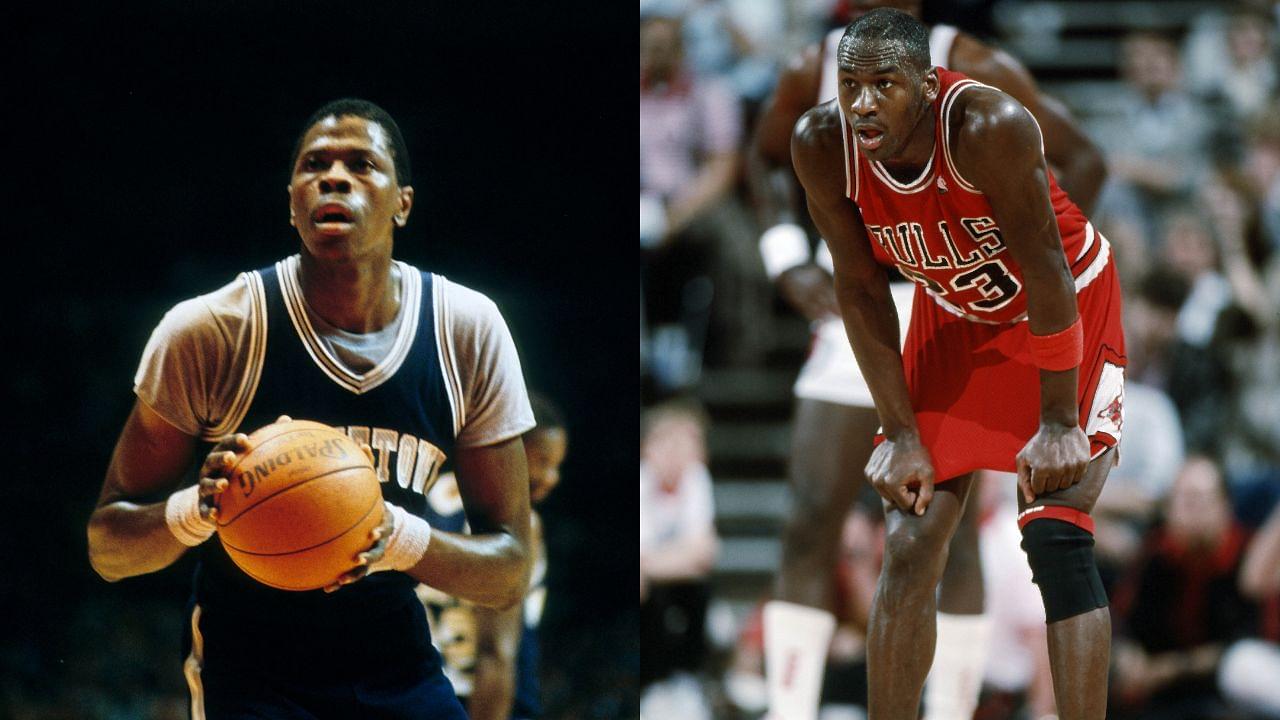Michael Jordan and Patrick Ewing have clashed a on variety of occasions over the course of multiple decades. They duked it out at the collegiate level and in the NBA. However, there have been a couple moments in time when they were on the same side. One of these times was when they were both signed to Nike. Jordan had signed on for $2.5 million over the course of 5 years and Ewing’s contract was up next. Unfortunately for the future Knicks legend, they were hesitant to sign him for a single reason.
Advertisement
While MJ may be known as perhaps the most iconic Nike athlete, it was Patrick Ewing who brought their basketball division to the forefront. Prior to signing with Nike, Jordan wore a variety of shoes such as the Converse All-Stars while at the University of North Carolina and Adidas sneakers during the Summer Olympics in 1984.
Ewing on the other hand wore Nike basketball high tops for the majority of his collegiate career. His coach at Georgetown, John Thompson, was even a board member for Nike at the time. Given that the Air Jordans had done as well as they did, Nike had a larger budget to work with as the 1985 Draft was approaching. Naturally, the man on their radar was Ewing as he already had a great rapport with the company.
Signing Patrick Ewing for more than Michael Jordan nixed the Ewing Nike deal
Given that Ewing wore Nike all throughout his days at Georgetown, it felt as though he would sign with them and not entertain any other options. At the time, Nike wanted to create three divisions for their basketball shoes: Jordans, Flights, and Forces. They wanted Ewing to headline the Force division the way Michael headed the Jordans division.
Peter Moore was responsible for designing the Forces in such a way that it would compliment Patrick Ewing’s dominant big-man play. He came up with the E-Forces. He spent months coming up with the design. However, in the midst of it all, they would receive word that Adidas had offered up a whopping $750,000 to Ewing per year to join them.
Nike executives held a meeting to discuss whether they should match this offer. In a final poll, it all came down to Moore, the man who spent months trying to build the perfect shoe for the Hoya legend. In an unexpected twist, Moore voted to let Ewing walk. His reasoning?
“I know that I don’t want to be the guy that’s going to call up Michael Jordan and tell him, ‘We just signed Patrick Ewing for $250k a year more than what we paid you; and we have you under contract for 4 more years at that price.’”
Michael Jordan annihilated his goals for his Nike rookie contract to stay valid
While Nike was very gracious with the amount of money they signed Michael Jordan for ($2.5 million over 5 years), they did so with certain stipulations. He would have to either win Rookie of the Year, average 20+ points per game in that rookie year, sell over $4 million worth of shoes, or become an All-Star.
The Chicago Bulls legend did it all and then some. He was named an All-Star, averaged over 28 points per game, ran away with Rookie of the Year honors, and sold over $100 million in shoe sales.







